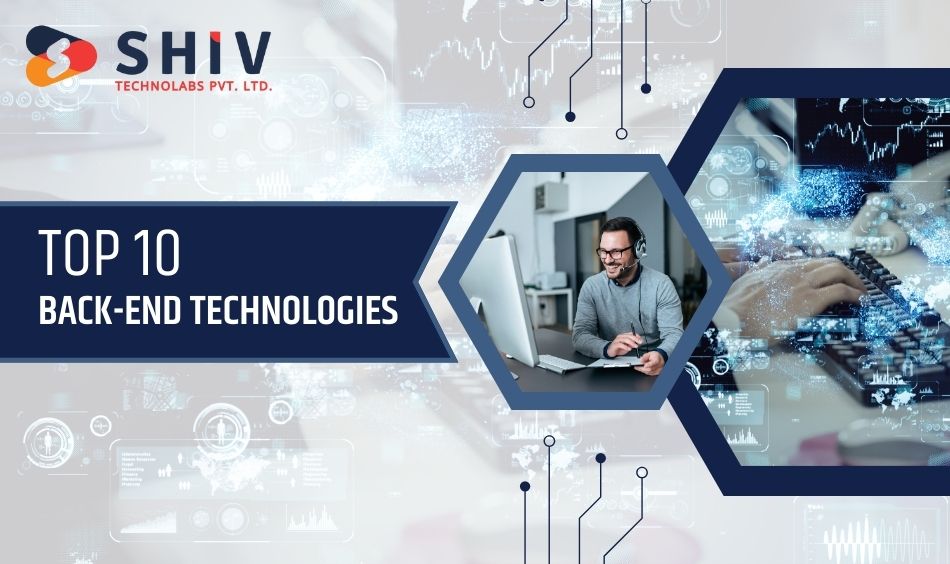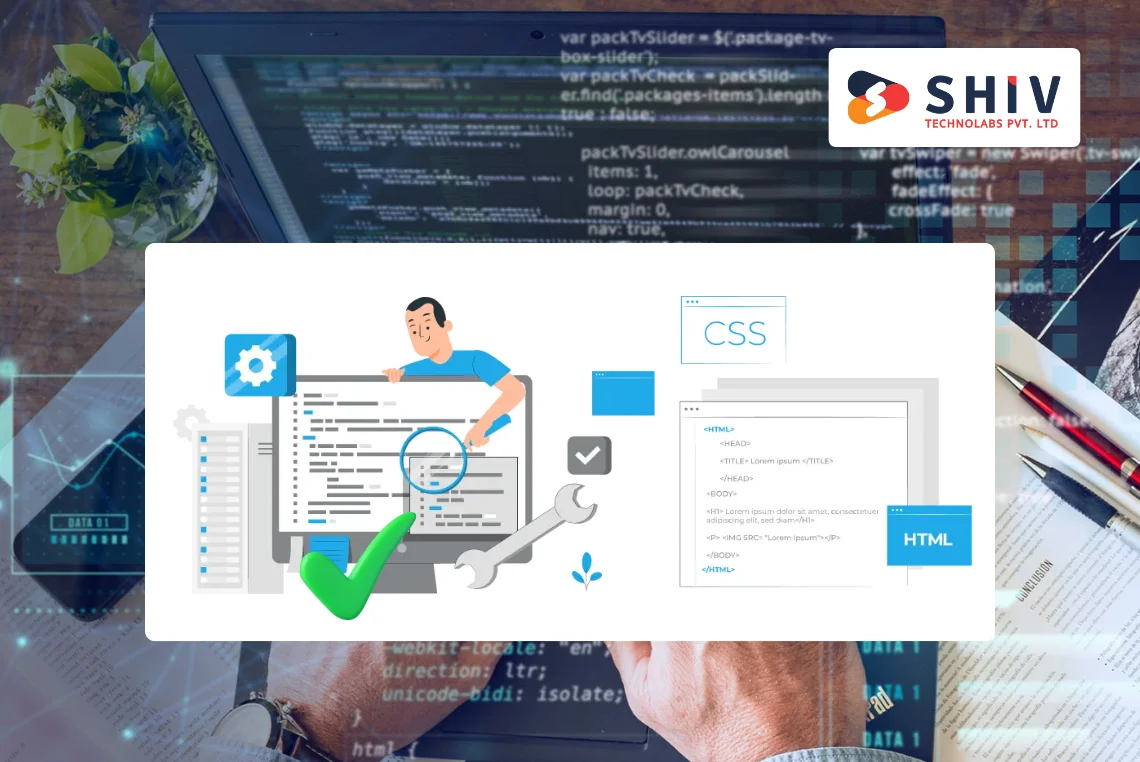Table of Contents
In the rapidly evolving world of technology, backend development is crucial for building reliable and scalable applications. As businesses increasingly depend on digital solutions, understanding the latest backend technologies becomes essential for developers and IT professionals. According to recent industry reports, the global backend-as-a-service (BaaS) market is projected to reach $30 billion by 2025, growing at a compound annual growth rate (CAGR) of 25%. This growth reflects the increasing demand for efficient backend solutions that support complex, data-driven applications. Technologies like Node.js have seen significant adoption, with a 50% increase in the number of Node.js development services over the past two years, highlighting its importance in modern development.
Furthermore, the rise in cloud computing and microservices architecture is driving the need for advanced backend technologies. Statistics show that 75% of enterprises are currently using or planning to use microservices to enhance their application scalability and flexibility. As a result, skilled Node.js developers are in high demand to build and maintain these sophisticated systems. The expansion of these technologies underscores the importance of staying updated with the latest backend trends to ensure that applications are both effective and competitive in today’s digital landscape.
What is Back-End Development?

Backend development defines as server-side part of web development. It involves creating and managing the components and systems that process and store data, and ensure that everything on the front end of a website or application works as intended. While the frontend is visible to users, the backend is responsible for making sure that requests are processed efficiently and data is managed correctly.
# Key Components of Back-End Development
- Server: The server is a machine that runs the backend software. It handles requests from clients, processes them, and sends back the appropriate responses.
- Database: This is where all the data is stored. Databases can be relational (like MySQL) or non-relational (like MongoDB), and they are integral to storing and retrieving data efficiently.
- Application Logic: This refers to the code that runs on the server, handling business rules and data processing.
- APIs: Application Programming Interfaces (APIs) allow different software components to communicate with each other. They are essential for integrating various services and components.
What are Backend Technologies?
Backend technologies are tools and frameworks used to build and manage the server-side of applications. These technologies handle the business logic, database interactions, and server configuration, ensuring that applications function smoothly and securely.
# Categories of Backend Technologies
- Programming Languages: These are used to write the server-side code. Popular languages include JavaScript (Node.js), Python, Ruby, Java, and PHP.
- Frameworks: Frameworks provide a structured way to build applications. They include tools and libraries that simplify development tasks. Examples are Django for Python, Express for Node.js, and Spring for Java.
- Databases: Databases are used to store and manage data. They come in various types, such as relational (SQL) and non-relational (NoSQL).
- Servers: Servers handle client requests and run backend applications. Examples include Apache, Nginx, and Microsoft IIS.
Top 10 Back-End Technologies

In the emerging world of backend development, selecting the right backend technology can impact the performance and scalability of applications. Here’s a detailed examination of the top 10 backend technologies, focusing on their core attributes, benefits, and ideal use cases.
1) Node.js
Node.js is an open-source, cross-platform JavaScript runtime built on Chrome’s V8 engine. It enables developers to execute JavaScript code server-side, allowing for the development of scalable network applications. Node.js uses an event-driven, non-blocking I/O model, which makes it highly efficient for handling numerous simultaneous connections.
Features:
- Non-Blocking I/O: This feature allows Node.js to handle multiple operations simultaneously without waiting for one to complete before starting another, improving performance.
- Single Language: Developers can use JavaScript for both client-side and server-side programming, leading to more consistent and manageable codebases.
- NPM Ecosystem: Node Package Manager (NPM) offers a comprehensive collection of libraries and tools, facilitating quick development and integration of various functionalities.
Pros:
- High Throughput: The non-blocking I/O model contributes to high throughput and low latency, making Node.js suitable for real-time applications.
- Scalability: Node.js can handle large numbers of concurrent connections, making it a good choice for scalable applications.
- Active Community: A vibrant community provides continuous updates, improvements, and a wealth of modules and packages.
Use Cases:
- Real-Time Communication: Ideal for applications requiring real-time interaction, such as messaging platforms and collaborative tools.
- API Services: Effective for building RESTful APIs and microservices due to its lightweight nature and efficiency.
- Single-Page Applications (SPAs): Supports dynamic and interactive SPAs with its asynchronous capabilities.
2) PHP
PHP (Hypertext Preprocessor) is a widely-used open-source scripting language tailored for web development. PHP scripts are processed on the server, generating HTML that is then sent to the client. It’s known for its ability to integrate with various databases and its broad usage in content management systems. For businesses seeking dynamic web solutions, PHP development offers a proven and reliable approach to creating interactive and database-driven websites.
Features:
- Server-Side Execution: PHP runs on the server to generate dynamic web content, making it a fundamental component in web development.
- Database Integration: Built-in support for numerous databases like MySQL and PostgreSQL facilitates data management and retrieval.
- Cross-Platform Compatibility: PHP operates across various operating systems, including Windows, Linux, and macOS, providing flexibility in hosting environments.
Pros:
- Ease of Use: Its straightforward syntax and widespread documentation make it accessible for developers of all skill levels.
- Cost-Effective: Being open-source, PHP is free to use and supported by a large number of free tools and libraries.
- Versatility: Integrates well with different web technologies and databases, allowing for a wide range of applications.
Use Cases:
- Content Management Systems: PHP is integral to CMS platforms like WordPress and Joomla, enabling dynamic content management.
- E-Commerce Platforms: Popular for building online stores due to its support for various payment gateways and e-commerce functionalities.
- Dynamic Websites: Effective for creating websites that interact with databases to deliver dynamic content.
3) Python
Python is a high-level, interpreted language which is known for its readability and versatility. It supports multiple programming which includes procedural, object-oriented, and functional programming. Python’s extensive standard library and third-party modules make it a versatile choice for a wide range of applications. This flexibility is particularly valuable for Python development projects, allowing developers to efficiently handle diverse programming tasks from web development to data analysis.
Features:
- Readability: Python’s syntax is designed to be clear and readable, facilitating easier code maintenance and development.
- Comprehensive Libraries: Offers a broad standard library and numerous third-party packages for diverse applications, from web development to data analysis.
- Multi-Paradigm Support: Supports different programming styles, allowing developers to choose the most suitable approach for their projects.
Pros:
- Rapid Development: Python’s simplicity and extensive libraries enable quick development and prototyping.
- Community and Support: A strong community provides extensive resources, including documentation, tutorials, and third-party libraries.
- Integration Capabilities: Easily integrates with other languages and technologies, enhancing its applicability across different platforms.
Use Cases:
- Web Development: Frameworks like Django and Flask enable the creation of robust web applications and services.
- Data Science and Machine Learning: Widely used for data analysis and machine learning with libraries such as Pandas, NumPy, and TensorFlow.
- Automation and Scripting: Ideal for automating repetitive tasks and developing scripts for various purposes.
4) Ruby
Ruby is a dynamic, object-oriented programming language which is known for its simplicity and productivity. Ruby’s most notable framework, Ruby on Rails, provides a powerful foundation for web application development, emphasizing conventions over configuration.
Features:
- Object-Oriented Design: Everything in Ruby is an object, allowing for a consistent and modular approach to programming.
- Ruby on Rails: A full-stack web framework that simplifies the creation of database-backed web applications with its built-in conventions.
- Readable Syntax: Ruby’s syntax is designed to be natural and easy to read, promoting efficient coding practices.
Pros:
- Speed of Development: Ruby on Rails accelerates development with its built-in tools and conventions, reducing the need for boilerplate code.
- Maintainability: The clean and readable code enhances maintainability and makes it easier to extend and modify applications.
- Community Support: A strong and supportive community provides a wealth of resources, gems (libraries), and best practices.
Use Cases:
- Web Applications: Ruby on Rails is widely used for building scalable web applications and startups.
- Prototyping: Ruby’s rapid development capabilities make it ideal for prototyping and testing new ideas.
- Custom Internal Tools: Suitable for developing custom tools and internal applications for businesses.
5) Java
Java is a high-level, class-based programming language designed for portability and performance. Its principle of “write once, run anywhere” allows applications to be executed on any device with a compatible Java Virtual Machine (JVM). Java is widely used in enterprise environments and mobile app development.
Features:
- Platform Independence: Java applications can run on any device with a JVM, making it highly portable across different platforms.
- Rich API: Provides a vast array of APIs and libraries for tasks such as networking, I/O operations, and user interface development.
- Multithreading: Built-in support for multithreading enables efficient execution of multiple tasks simultaneously.
Pros:
- Scalability: Suitable for developing large-scale enterprise applications due to its strong architecture and performance capabilities.
- Performance: The JVM optimizes Java applications for performance, ensuring efficient execution.
- Strong Typing: Static typing helps identify and address errors during compilation, leading to more reliable code.
Use Cases:
- Enterprise Applications: Ideal for developing enterprise-level software, including ERP systems and large-scale business applications.
- Android Development: The primary language for Android app development, supported by a wide range of tools and frameworks.
- Web Services: Utilized for building secure and scalable web services and applications with frameworks such as Spring.
6) Kotlin
Kotlin is a statically-typed programming language which is developed by JetBrains and designed to be fully interoperable with Java. It provides modern features and syntax improvements over Java, making it suitable for both Android and server-side development.
Features:
- Interoperability: Kotlin can work alongside Java code, allowing developers to leverage existing Java libraries and frameworks.
- Concise Syntax: Reduces the verbosity of code with features like type inference and data classes, leading to more concise and readable code.
- Null Safety: Incorporates null safety features to prevent common programming errors related to null references.
Pros:
- Productivity: Modern language features and concise syntax improve developer productivity and code quality.
- Cross-Platform Support: Kotlin Multiplatform enables code sharing across different platforms, including JVM, JavaScript, and native environments.
- Compatibility: Easily integrates with existing Java projects and ecosystems, facilitating gradual adoption.
Use Cases:
- Android Development: Kotlin is increasingly the preferred language for Android development, offering enhanced productivity and modern features.
- Server-Side Applications: Suitable for building server-side applications using frameworks like Ktor.
- Cross-Platform Development: Enables shared codebases for applications running on multiple platforms using Kotlin Multiplatform.
7) C#
C# (C-Sharp) is a statically-typed, object-oriented programming language which is developed by Microsoft. It is primarily used within the .NET ecosystem to create a variety of applications, from web services to desktop software and games.
Features:
- Object-Oriented: Supports principles of object-oriented programming, including encapsulation, inheritance, and polymorphism.
- .NET Integration: Deep integration with the .NET framework provides access to a broad range of libraries and tools for development.
- Modern Language Features: Includes features such as asynchronous programming, LINQ (Language Integrated Query), and automatic memory management.
Pros:
- Versatility: Suitable for developing diverse applications, including web services, desktop applications, and games.
- Development Tools: Supported by powerful development environments like Microsoft Visual Studio, which offers extensive debugging and productivity tools.
- Performance: The .NET runtime provides efficient execution of applications, particularly for enterprise-level software.
Use Cases:
- Enterprise Applications: Frequently used for building enterprise solutions and services within the Microsoft ecosystem.
- Game Development: Employed in game development with Unity, a popular game engine supporting C# scripting.
- Web Development: Utilized for creating dynamic web applications with ASP.NET and related frameworks.
8) Rust
Rust is a systems programming language designed to provide safety and performance. It emphasizes memory safety without a garbage collector, making it a suitable choice for performance-critical applications where reliability is paramount.
Features:
- Memory Safety: Rust’s ownership model and borrowing rules ensure memory safety without the need for a garbage collector.
- Concurrency: Provides built-in support for concurrent programming, enabling the development of highly parallel and efficient applications.
- Zero-Cost Abstractions: Offers high-level abstractions without compromising performance, thanks to its compile-time optimizations.
Pros:
- Safety and Performance: Rust’s design ensures safe and efficient memory management, reducing common bugs such as null pointer dereferences and buffer overflows.
- Concurrency: Facilitates the development of concurrent applications with its lightweight threading model and ownership system.
- Growing Ecosystem: An expanding ecosystem of libraries and tools supports various development needs and use cases.
Use Cases:
- Systems Programming: Ideal for developing low-level system software, including operating systems and device drivers.
- Performance-Critical Applications: Suitable for applications requiring high performance and reliability, such as game engines and high-frequency trading systems.
- WebAssembly: Used for compiling code to WebAssembly, enabling efficient execution of code in web browsers.
9) Scala
Scala is a hybrid programming language combining functional and object-oriented programming paradigms. It runs on the Java Virtual Machine (JVM) and offers advanced features for expressive and concise programming.
Features:
- Functional Programming: Supports first-class functions, immutability, and pattern matching, enhancing functional programming capabilities.
- Interoperability with Java: Provides full compatibility with Java libraries and frameworks, allowing for integration with existing Java codebases.
- Advanced Type System: Features a sophisticated type system with support for type inference, generics, and higher-kinded types.
Pros:
- Expressiveness: Combines functional and object-oriented programming, allowing for expressive and concise code.
- Integration: Easily interoperates with Java, facilitating the use of existing Java libraries and frameworks.
- Conciseness: Reduces boilerplate code with its expressive syntax, improving code readability and maintainability.
Use Cases:
- Big Data Processing: Widely used with Apache Spark for handling big data and analytics.
- Web Development: Suitable for creating scalable web applications and microservices.
- Functional Programming: Ideal for projects that leverage functional programming techniques for improved code quality and maintainability.
10) ASP.NET
ASP.NET is a web development framework developed by Microsoft for building dynamic and interactive web applications and services. It is part of the .NET ecosystem and provides a comprehensive set of tools and libraries for web development.
Features:
- MVC Architecture: Supports Model-View-Controller (MVC) architecture for building structured and maintainable web applications.
- Web API: Provides tools for creating RESTful services and APIs, facilitating the development of scalable web services.
- Security: Includes built-in features for authentication, authorization, and secure data handling, ensuring robust security for web applications.
Pros:
- Development Tools: Integrated with Microsoft Visual Studio, offering a powerful development environment with extensive debugging and productivity features.
- Performance: Optimized for high-performance web applications, with efficient handling of server-side logic and resources.
- Scalability: Suitable for creating large-scale web applications with complex requirements and high traffic.
Use Cases:
- Enterprise Web Applications: Ideal for developing large and complex enterprise-level web applications, catering to intricate business requirements and large user bases.
- APIs and Web Services: Used for building RESTful APIs and web services to support various applications and integrations, facilitating seamless communication between different systems.
- Content Management Systems: Supports the development of content management systems and e-commerce platforms, allowing for dynamic content handling and online store functionalities.
Conclusion
Choosing the right backend technology is essential for the performance and scalability of your applications. Each technology discussed here has its strengths and specific use cases, from the asynchronous capabilities of Node.js to the versatility of Python and the enterprise readiness of Java. Understanding these technologies helps in selecting the best fit for your project’s requirements.
Node.js, with its non-blocking I/O and extensive npm ecosystem, is particularly well-suited for real-time applications and high-throughput systems. For businesses looking for specialized expertise, working with a Node.js Development Company in Australia can connect you with skilled Node.js developers who are equipped to meet your specific needs.
At Shiv Technolabs, we offer expert Node.js development services and a broad range of backend technologies. Our team of experienced developers is dedicated to delivering solutions that support your business objectives and drive growth. With a focus on quality and performance, we work closely with you to develop scalable and reliable backend systems.
Contact Shiv Technolabs today to discover how our expertise can contribute to your project’s success. Let us help you build a strong foundation for your backend systems with our professional development services.



















